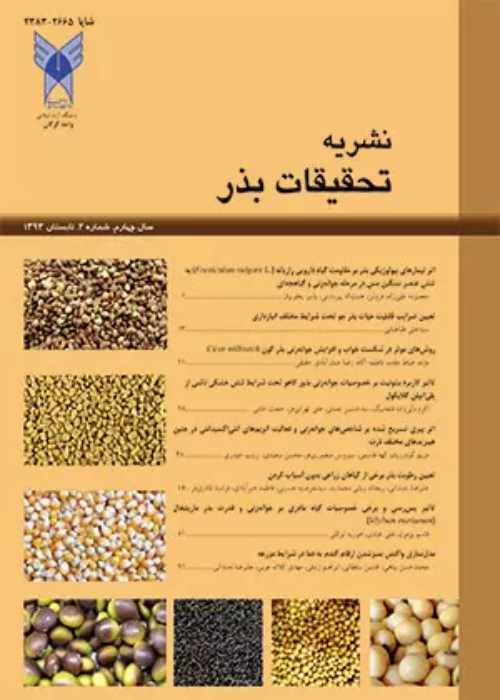Effect of waterlogging stress in leaflet 3 stage of wheat cultivars on root and physiological traits of wheat
The first negative effect of waterlogging stress for the plant is the lack of oxygen in the soil. Reduction of available oxygen reduces the development of roots and aerial parts of the plant. In order to evaluate wheat cultivars in Golestan province under experimental oxygen restriction in December 2016 in the greenhouse of Gonbad Kavous University Faculty of Agriculture in a pot and to investigate the effect of waterlogging periods on root traits and physiological characteristics of seedlings of wheat cultivars as a factorial experiment in a completely factorial design. 3 flood levels (zero, 10 and 20 days) and 10 wheat cultivars (Aftab, Azar, Karim, Kuhdasht, Line 17, Sardari, Qaboos, Morvarid and Zagros domes) were performed in 4 replications. Results of germination test shosed that the highest germination percentaged was occurred in kohdasht and the most amount of germination rate was showed in sardari cultivar. The experimental results showed that the effect of waterlogging period, cultivar and cultivar interaction effect on waterlogging on all root traits was significant at 1% level and the effect of flooding stress on chlorophyll a and total chlorophyll at 5% probability level and proline at 1% probability level was significant. Were not significant on carotenoids. Also, the effect of cultivar was significant only on chlorophyll b trait at the level of 1% probability and did not show a significant effect on other traits. The interaction of cultivars in waterlogging on chlorophyll b, carotenoids and proline was significant at the level of 1% probability. Koohdasht cultivar had the highest root length, fresh root weight, root dry weight and root surface density compared to other cultivars and had less fluctuations in stress conditions than other cultivars. The rest was the highest. It is better not to use Azar and Line 17 cultivars in flooded conditions in the early stages of the plant and also Aftab cultivars in weak stress and Zagros in more severe stress. Sardari and Kuhdasht cultivars had the highest content of chlorophyll b and carotenoids at non- stress and 10-day levels, respectively, which produced the highest proline in severe stress.
Chlorophyll , Index , Proline , Root
- حق عضویت دریافتی صرف حمایت از نشریات عضو و نگهداری، تکمیل و توسعه مگیران میشود.
- پرداخت حق اشتراک و دانلود مقالات اجازه بازنشر آن در سایر رسانههای چاپی و دیجیتال را به کاربر نمیدهد.



